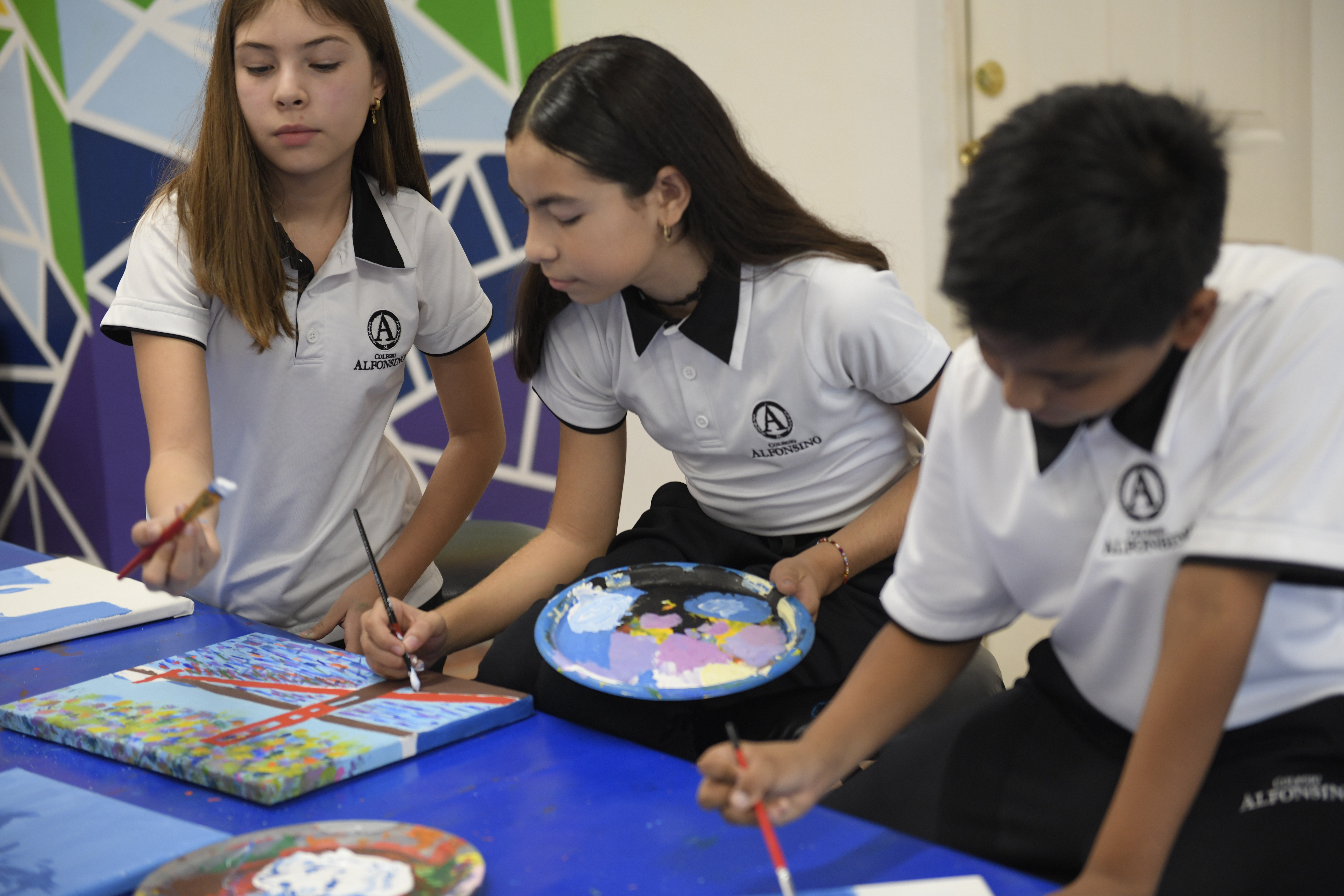- Stimulating Creativity:
Art education encourages children to think outside the box, by stimulating creativity and imagination. Through activities like painting, sculpting, and drawing, children learn to express themselves in unique and inventive ways. Nurturing creativity from a young age sets the stage for problem-solving skills and innovative thinking in other areas of life.
- Developing Fine Motor Skills:
Engaging in art activities involves complex hand-eye coordination. Whether it’s holding a paintbrush, molding clay, or cutting paper, these activities help refine the child’s dexterity and control over their movements. They develop strength and precision in their hands and fingers, which are essential for tasks like writing, typing, and even everyday activities like tying shoelaces.
- Cultivating Emotional Intelligence:
Art is a powerful medium for exploring and expressing emotions. Through art, children learn to identify and process their feelings in a constructive way. Whether they’re painting a joyful scene or sculpting something that reflects their fears, art allows them to communicate their emotions in a safe and non-verbal way. This process fosters self-awareness and empathy, enabling children to understand both their own emotions and those of others.
- Improving Academic Performance:
Contrary to the misconception that art is a distraction from the academic curriculum, studies have shown that incorporating art into education can actually help improve academic performance. Engaging in artistic activities stimulates various regions of the brain, including those responsible for memory, attention, and problem-solving. As a result, children who participate in art education often demonstrate improved performance in subjects like math, science, and language arts.
- Celebrating cultural diversity:
Through exposure to different art forms from around the world, children learn to appreciate cultural diversity and learn to respect and celebrate differences. This exposure not only enriches their understanding of the world but also fosters a sense of global citizenship and empathy towards others.
- Building Confidence:
Art education provides children with a safe space to express themselves without fear of judgment. As they witness their ideas take shape, children learn to trust their instincts boosting their self-esteem, this sets the foundation for a lifetime of self-assurance.
In conclusion, art class is not a shallow addition to the academic content but an essential component of a balanced curriculum. Art education prepares young minds for a lifetime of learning and personal growth. As educators and parents, it’s imperative to recognize the importance of art in child development and ensure that it continues to hold a central place in the educational environment. After all, a society that values creativity and expression is one that nurtures the full potential of its future generations.
By: Miss Lily Ortiz


0 Comments